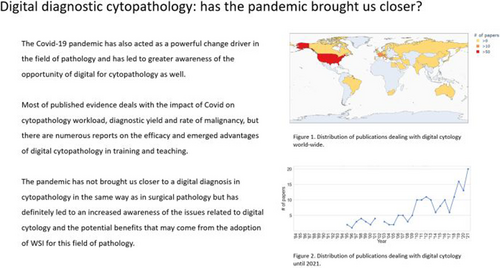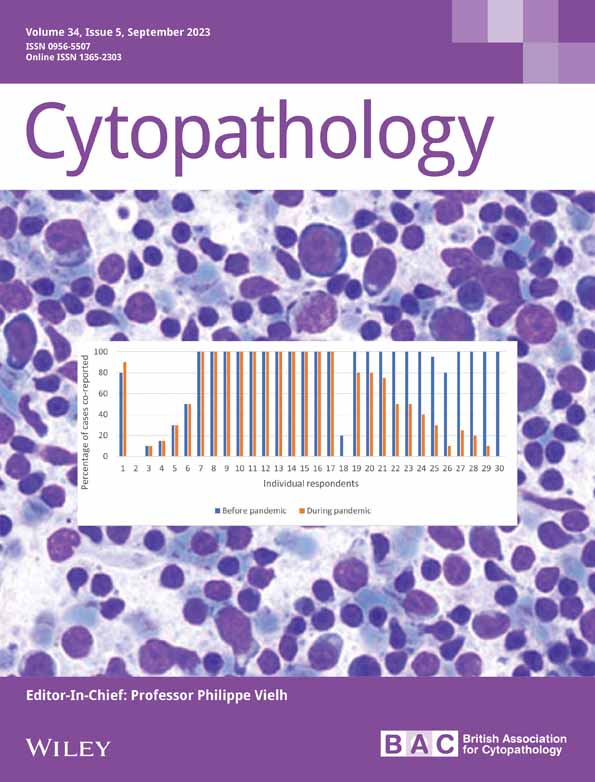Digital diagnostic cytopathology: Has the pandemic brought us closer?
Abstract
The COVID-19 pandemic has acted as a powerful change driver in the field of pathology and has had relevant consequences on the practice of cytopathology, in terms of changes in workload, rates of malignancy, and the performance of cytology. At the same time, regulatory authorities have relaxed their requirements for the deployment of digital pathology for remote diagnostic reporting. However, most of these improvements have concerned digital histopathology. Data from a literature search show that experiences in digital cytopathology during the pandemic have concerned mainly educational and academic activities. From a broader point of view, when searching for all published literature on digital pathology, only a minority of papers deal with cytopathology, but a noticeable increase in publications has been seen in the last 10 years, with an upward trend toward a maximum of papers in 2021. Indeed, the pandemic has led to greater awareness of the possibility of digital for cytopathology as well.
Graphical Abstract
The COVID-19 pandemic has acted as a powerful change driver in the field of pathology and has led to greater awareness of the possibility of digital for cytopathology. Most of the published evidence for the impact of COVID on cytopathology deals with the workload, diagnostic yield, and rate of malignancy, but there are numerous reports on the efficacy and emerging advantages of digital cytopathology in training and teaching. The pandemic has not brought us closer to a digital diagnosis in cytopathology in the same way as in surgical pathology, but has definitely led to an increased awareness of the issues related to digital cytology and the potential benefits that may come from the adoption of whole slide imaging for this field of pathology.
CONFLICT OF INTEREST STATEMENT
The authors declare that they do not have any conflicts of interest.
Open Research
DATA AVAILABILITY STATEMENT
Data sharing is not applicable to this article as no new data were created or analysed in this study.





